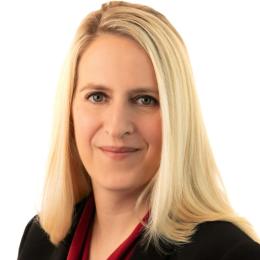Banner artwork by Media Whale Stock / Shutterstock.com
The digital disruption and operational reformation journey of BASF’s North American Intellectual Property (IP) department began in 2015 when our global IP department implemented a digital IP data, asset, and contract management and workflow system (IPMS). IPMS shifted the mindset about digital disruption and its implications for our people, service, and value. Since 2017, our IP department has embraced additional digital tools and adopted new ways to work, collectively resulting in the ability to reduce our headcount by 19 percent and our budget by 14 percent despite demand for IP legal services climbing. Here’s how we did it.
BASF Corporation’s North America IP department is a regional intellectual property legal team comprised of 30 IP attorneys, patent agents, paralegals, and administrative staff based in the United States and Canada.
Within the BASF Group, the IP and legal departments are separate. Our regional IP legal team is part of BASF SE’s Global IP Department, which has another 285 members based in Europe, South America, China, and India. We also collaborate closely with a legal team based at the BASF Group’s Shared Service Center in Montevideo, Uruguay. These widespread office locations, and the fact that BASF is highly matrixed, ensure that our regional team often works on global IP asset projects and transactions with colleagues all over the world, requiring sophisticated connectedness. In addition, the complexity of multinational patent practice, including the criticality of prompt filings to secure patent rights, demands an unassailable IP asset management system. Finally, the ability to provide high-value, timely, and cost-effective work to clients cannot be achieved without a digital organizational nucleus that also enables internal and external benchmarking on performance and other metrics.

1. Create common operational languages.
Implement a global IP data, asset, and contract management and workflow system.
Using different databases and non-automated workflows for a wide variety of legal matters, IP-related or otherwise, is labor-intensive. It results in process inefficiency, confusion in communications, data inconsistency and loss, and burdensome report generation. Customized and implemented worldwide, IPMS eliminated those problems while enabling:
- Key performance indicator monitoring;
- Sustainable knowledge management;
- More efficient and error-free outside counsel interactions;
- Cost savings due to insourcing standard tasks; and
- Fully automated IP legal services requests from in-house clients.
IPMS, together with BASF’s internal communications platform, made it possible for global IP department team members to easily collaborate regardless of time zone.
Use data to find opportunities and leverage.
In 2019, our regional IP operations team was analyzing law firm data captured by a billing coding system that we created and required IP outside counsel to use. Despite translation services being billed at cost in accordance with our regional outside counsel guidelines, we noticed that these services made up approximately 16 percent of our third-party costs. In addition, translation services were performed for us by dozens of law firms around the world, which was inefficient and risked patent-to-patent translation inconsistencies. We decided that there had to be a better way.
Sophisticated translation service providers were successfully using artificial intelligence, including machine learning for translation memory, to produce faster, lower-cost, and more consistent translation results. Moreover, centralizing translation services would create price negotiation leverage with third parties. Operationally, this was low hanging fruit. After conducting a bidding process, we centralized translation services in 2020 with one provider, which streamlined workflows and increased consistency. Attributable in large part to the power of increasing translation memory, we realized 6.4 percent in savings in 2020, 15.5 percent in 2021, and 18.5 percent in 2022.

Automate repetitive tasks and reduce process variability.
Our regional IP legal team joined the Corporate Legal Operations Consortium (CLOC) and sought out other IP and legal operations upskilling resources to learn about available digital tools. We piloted a few and found the no code application development platforms and bots to be exceptionally useful in creating consistency and enhancing collaboration, the specific uses for which are discussed below.
Ensure that the right work is on the right desk.
In-house attorneys do much more than practice law these days. We are expected to capture, track, and analyze data to identify efficiency and cost-saving opportunities.
At the same time, “doing more with less” is now firmly entrenched in the corporate vernacular and no longer an occasional rallying call. When we joined CLOC, its Practice Operations principle confirmed our belief that expensive IP attorneys should spend most of their time on high value, high risk, and strategically important matters. Bolstered by that confirmation and the operational vocabulary and framework that CLOC provided, we extended its Practice Operations principle to the patent agent and IP paralegal teams, concluding that all members of our regional IP legal team should spend most of their time handling the highest value, highest risk, and most strategically important work commensurate with their role.
Consider whether work packages could be performed more efficiently by others.
Until early 2021, all our IP legal professionals were heavily engaged in matter creation, invoice approval, and billing issue resolution processes. Running on a web-based platform, these processes generated granular cost data like the translation costs mentioned above. But, they were labor intensive.
We decided to harmonize our regional invoicing processes with the global team’s since an accounts payable team already handled the global IP department’s invoicing. That meant moving all invoicing tasks from our team members to the experts.
The accounts payable team didn’t mind the additional invoices. They were a mere incremental workload increase due to their existing competencies and processes.
We created approximately 1,400 hours in annual capacity which was promptly reallocated to satisfy unmet demand for invention harvesting and IP strategy development and counseling while still capturing cost data.

One IP/legal department organizational model does not fit all.
We constantly assess the way legal work is assigned. Our former sole organizing principle for IP attorneys was to assign a business or research group to each attorney. The IP attorney was responsible — and therefore needed to possess the skills — for all IP legal needs of that business or research group.
These ranged from:
- Low complexity matters such as negotiating non-disclosure agreements (NDAs) to
- Sophisticated matters such as patent portfolio management, IP opinions, and strategic counseling to
- Complex matters such as cross-border licensing agreements, antitrust-IP law intersection issues, and M&A.
Such a staffing approach meant that hiring was based on the highest common denominator, always requiring experienced and expensive IP attorneys.
Taking a fresh look at work allocation for our IP legal professionals through the operational lens, we undertook the following:
- Classified all work packages by type and complexity, and identified all unmet IP legal demand, ignoring business and research group origin;
- Considered upskilling needs, knowledge capture, career development goals, and mentoring opportunities;
- Developed a more agile organizational structure capable of meeting changing business needs; and
- Mapped the work packages to existing capabilities, making staffing gaps and attendant hiring options clear.
Our Practice Operations analyses yielded a variety of solutions that we deployed over time:
In 2018, NDAs were moved from the desks of experienced IP attorneys and centralized with a less expensive, junior-level IP attorney.
- Turnaround for NDAs improved to within 24 hours from request, so clients were happier.
- Mid- and senior-level IP attorneys experienced increased job satisfaction due to the decrease in high -volume, low-risk matters.
- The junior-level IP attorney developed valuable transactional skills, building a foundation that allowed them to eventually take on more complex legal work and increased responsibility.
In April 2020, an automated, electronic “self-service agreement” program, including program-specific playbooks and templates (with pre-determined options for a limited number of fields), was created and launched.
- This program enables US clients to autonomously create and execute NDAs and basic contracts according to their own timeline, increasing their satisfaction.
In 2021, the NDA centralization model discussed above was replicated and scaled up. The legal team was established in Uruguay under the direct supervision of US and Canadian attorneys.
- The work package stratification exercise discussed above had the collateral benefit of enabling us to identify all IP agreements for which a playbook with finite options for various clauses could be developed.
- The Montevideo-based legal team handles 90 percent of our NDAs and is currently averaging 75 percent for our standard agreement work. New work packages are still transitioning so we expect this average to increase.
IP work for Canada had always been handled by US IP attorneys with the advice of Canadian outside counsel. In 2021, a US-based team member’s retirement resulted in the regional IP team hiring BASF’s first Canada-based IP attorney.
- This move freed up one full-time equivalent of capacity in the US and lowered salary and outside counsel costs.
Finally, with increased capacity we brought certain patent prosecution work back in-house to US patent agents and to our India-based legal team which created upskilling opportunities for the latter and reduced outside counsel costs overall.
Automate repetitive workflows.
We routinely conduct brainstorming sessions with the entire regional team for an “all levels of the organization” perspective to identify ways to save time and lower costs. Many suggestions concern repetitive workflows and tasks, including workflows in IPMS which have led to employing digital tools such as:
- A no-code application development platform to:
- Provide on-demand guidance for troubleshooting IPMS access issues, which is frequently requested by clients to all team members;
- Digitize the guidance materials used by the Montevideo-based legal team;
- Prepare first drafts of NDAs; and
- Automate the workflow analysis for digital projects;
- On-demand, digital training videos created by IP attorneys and IP paralegals; and
- Bots in IPMS to perform tasks previously performed by IP paralegals.

Continuously assess your IP/legal department.
Resource and work package assessments are not “one and done.” They should form an ongoing part of your operations to reduce costs, increase capacity to meet complex client needs, and improve job satisfaction.
3. Develop a sustainable knowledge management culture.
A high-achieving in-house IP/legal organization, especially one whose demographics include a range of experience among IP professionals, requires knowledge management (KM) to, among other things, reduce new team members’ learning curves. KM does not mean a “digital dumping ground” where everyone uploads their versions of training slides, negotiated agreements, or random language on various legal issues. KM processes must be sustainable, and the content must be thoughtfully curated.

Define and communicate your KM framework.
Like the continual assessment of an IP/legal department’s resources and work packages, KM is not one and done, and it must be sustainable. What does that mean? Sustainable KM is an operational and expertise ecosystem that ensures up-to-date knowledge and best practices are available when needed, accessible to those who need it, and easy to find. Sustainable KM needs a defined framework:
- Topics that are the IP/legal department’s priorities;
- Processes for transfer and management of the knowledge; and
- Repositories for knowledge storage with clear access.
Name your IP/legal department’s KM pain points.
IP transactions form a significant portion of the legal services provided by our IP attorneys. With very few exceptions, all contract work is performed in-house. Despite this reality, centralized contract drafting resources did not exist and work product varied greatly.
IP attorneys new to the team often asked, “Do we have a template for that?” and struggled to understand whether there was “a BASF way” to handle certain contract provisions or determine risk appetite. As a result, new IP attorneys spent valuable time chasing down both templates and guidance, relying on whatever templates, resources, and experience they managed to accrue.
When we considered these challenges from a legal operations perspective, we recognized that our “knowledge management” for this core practice area was the equivalent of an information archipelago. In 2019 we started to carefully curate an “IP Contracts Digital Library” that includes annotated templates and corresponding, detailed best practices to provide new or less-experienced IP attorneys with a solid drafting and negotiation baseline.

We drafted a charter for the IP Contracts Digital Library team that provided for (i) a three-member inaugural team to identify the agreement types to be included in the library, and the timeline for their creation, and (ii) accountability and fresh perspectives, by selecting subsequent rotating team members who review and maintain the library according to charter-defined expectations.
By the end of 2022, our library included heavily annotated templates (including drafting/negotiation considerations, legal guidance, and fallback positions) for our four most common agreement types, alternative template versions for each agreement type, and other miscellaneous guidance for common IP contracting issues. With these robust contracting resources, IP attorneys can immediately focus on the substance of new matters.
Diversify training delivery.
No matter what type of KM pain points your IP/legal department may have, creating and managing training materials are probably among them. Nearly every IP attorney in our group had their own training materials for key topics, which created inconsistent messaging and resulted in significant redundancies regarding preparation and maintenance of training materials and tools.
In 2018, we defined four basic IP law training topics to be presented annually to relevant business and research groups, collected existing materials, picked the best elements of those, and produced a suite of standardized slide decks. Importantly, we centralized access to and updating of those slide decks.
When our global IP department sharpened its focus to concentrate on high value, strategic IP topics using state-of-the-art analytics and tools, we had to pivot. While a small team in Germany prepared the core training materials for worldwide use, regional training still had to be delivered. We did not have the capacity to train and had no budget to hire. Ultimately, neither the basic nor specialized training was sacrificed. We recaptured the six to eight hours a year most IP attorneys spent delivering the basic training by creating on-demand digital versions of that training and arranged for it to be housed on and accessible from a centralized HR platform. IP attorneys now have the capacity to deliver highly customized, strategic training.

Establish a singular point of entry. Then, capture, communicate, evaluate, and update.
Having a “one stop shop” for content facilitates the easy access requirement mentioned above. This could be in the form of a well-organized Microsoft Teams channel with folders and subfolders or a landing page on your company’s intranet.
Once a singular entry point is created, it is critical to continually capture content, communicate to stakeholders where the content is and how it can be accessed, while also frequently evaluating and updating that content.
4. Focus on making costs transparent and predictable.
A main operational concern should be fiscal discipline, and not just the obvious goal of meeting or coming in below budget for spend (and for headcount if you have a separate budget for that). An IP/legal department should be able to provide detailed reporting below the 30,000 foot level.
It is not sufficient to provide clients with the aggregated annual budget for categories like patent filing fees, maintenance fees, or outside counsel fees. An IP/legal department should have systems in place to capture details like filing fees and maintenance fees by jurisdiction, outside counsel translation costs, outside counsel charges for claim drafting, etc.
This more granular information provides the IP/legal department with meaningful data that enables it to compare law firms, forming the basis for negotiation, and to help steer client decisions about legal matters such as patent portfolio management.
Consider alternative fee arrangements.
With the data and insight available from the digitalization and harmonization efforts described above, the global IP department developed a standardized Fixed Fee Schedule (FFS) that we implemented in the region for specific aspects of IP law practice, however, this model can be adopted for any practice area that requires repetitive, similar tasks without defaulting to a retainer arrangement.
The FFS lists each task, breaking it down into its constituent elements so that we and outside counsel know what work will be performed for each task, and at what cost. Law firms work under the FFS, submit invoices using a specific format and individual code numbers per task, creating consistent billing and cost predictability for clients. The FFS enables more accurate budgeting and makes it easier to spot trends and opportunities for cost reduction.

Limit the number of law firms for non-litigation matters.
On a regular basis, multiple law firms are invited, on a by-country basis, to participate in a bidding process for FFS tasks. BASF then selects a limited number of firms per country for an agreed multi-year period based on price, expertise, quality, and diversity, equity, and inclusion practices. Limiting the number of firms per country incentivizes them and builds a deeper partnership between us.
Legal Ops may be a relatively new movement, but the drivers behind it have been core principles of in-house practice for decades. We are keeping our people happy by giving them fulfilling work, reducing administrative burdens, and facilitating collaboration. We are improving the quality of the service we provide to our clients by reducing turnaround times and focusing on strategic, high-value work. We are creating value by automating tasks and bringing down outside counsel spend and in-house costs. We are creating sustainable knowledge management systems by centralizing workflows and thoughtfully curating resources. We are embracing digitalization by leveraging innovative legal tech tools. We actively look for opportunities to create efficiency when deciding how to allocate work, store documentation, and engage with clients.
This is not a static effort. What is state of the art today will be old news tomorrow. We must continuously assess our systems and processes to remain up to date on current thought leadership. Of equal importance, we must continue to encourage our team to think entrepreneurially and foster a safe environment to try new things. We are not afraid to pivot, improve, change, or even fail.
Our journey continues....
Disclaimer: The information in any resource in this website should not be construed as legal advice or as a legal opinion on specific facts, and should not be considered representing the views of its authors, its sponsors, and/or ACC. These resources are not intended as a definitive statement on the subject addressed. Rather, they are intended to serve as a tool providing practical guidance and references for the busy in-house practitioner and other readers.








